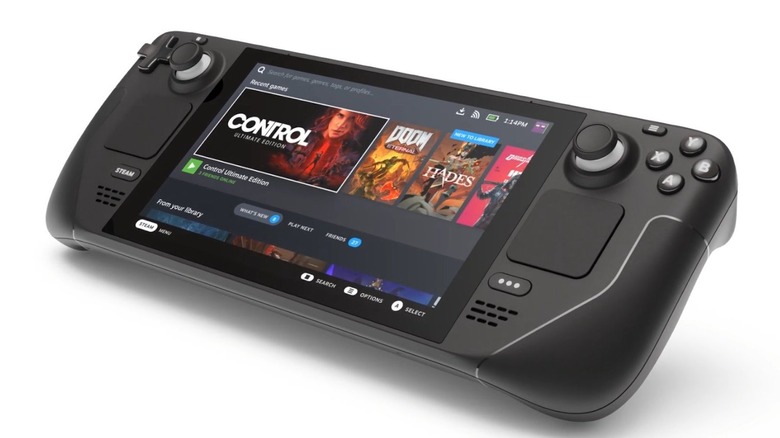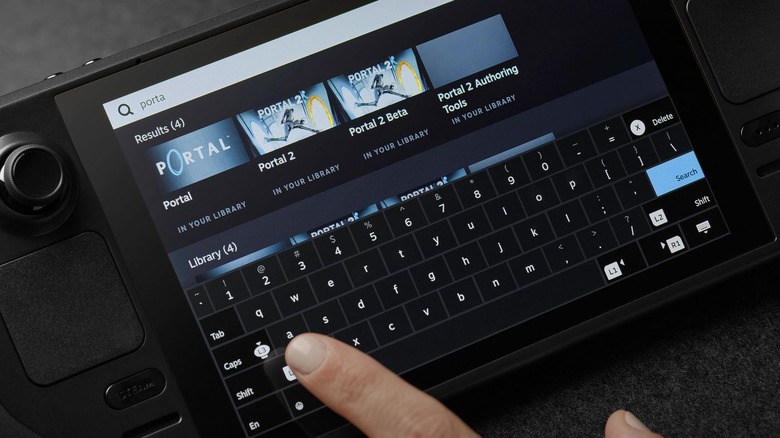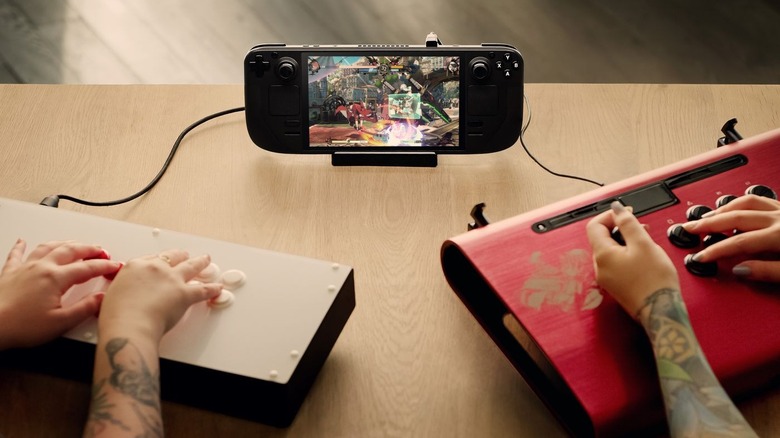The 3 Steam Deck Models Explained
Valve recently announced the Steam Deck, its handheld PC designed for gaming on the go. Coming in three different models, the Steam Deck aims to run modern PC games on a handheld device. The Steam Deck, as explained on the product's official website, is a very flexible platform, allowing buyers to shop different digital storefronts and giving users the option to remote-play titles from their desktop or download them directly to the device.
All three models sport a 1200x800 resolution screen, but there are a few big differences that may sway customers to one version or another.
Based on an analysis by Digital Foundry, the Steam Deck's most comparable counterpart is actually the Xbox Series S, a next generation console that focuses on hitting high frame rates at 1080p resolution. While the Steam Deck won't perform quite the same way the way your high-end PC might, that's not really the point — the point is the ability to take PC titles wherever you may find yourself. That said, you may want to think hard about which of the three models you pick up.
Model 1 - 64GB eMMC storage
The lower end model comes at the shockingly low price point of $400 (only $100 more than the standard Nintendo Switch), but some pretty intense cuts are made to get there. Valve president Gabe Newell told IGN that getting to the $400 price point was a "painful" process, but that it was also worth it to be able to release an entry level device for new customers. Even so, it still might be worth getting a higher-priced model.
While the majority of components are the same across all of the three Steam Deck models, the storage solution on the $400 model is significantly lesser. According to the Steam Deck store page, the mid-tier features faster storage than the low-tier, while the high-tier is labelled as the fastest.
The main difference is the eMMC drive versus the NVMe SSD on the other two models. The eMMC reads at about 500mb per second, while the other drives should read at about 4GB per second, as noted by GameSpot. While mileage may vary on a game by game basis, the 64GB model will read at 1/8th the speed of the other models.
It's also important to remember that 64GB is a relatively small amount of storage in modern games, particularly when something like "Red Dead Redemption 2" takes up 150GB on its own.
Model 2 - 256GB NVMe SSD
In addition to having a much faster drive, the mid-tier model offers increased storage space, jumping considerably from 64GB to 256GB.
The 256GB model costs $530, which might seem like a hefty price compared to other video game consoles. This version comes in at $30 more than both the Xbox Series X or PlayStation 5 consoles, both of which have more storage and computing power (as pointed out by The Verge). Of course, the trade-off is that this device is portable and acts as a fully-functioning personal PC.
This model comes with four times the amount of storage as the low-end model and it has a much faster drive. While all three models have a high-speed MicroSD slot on them to expand the storage, it's worth noting that both the MicroSD and the eMMC drive will perform much slower than the SSD, meaning that internal storage might be the main thing to consider in this instance. This model also comes bundled with some exclusive Steam profile pictures, if that is something that interests you.
Model 3 - 512GB NVMe SSD
The top-tier model comes in at $650, offering a whopping 512GB of high-speed storage. Coming in at $120 more than the mid-tier model with double the storage and a more durable screen, the high-end model just might be worth the extra cash. While it will perform roughly the same as the mid-tier model, having 512GB of built in high-speed storage is what makes this version the most appealing. You can install a decent number of AAA games on the internal storage, while putting lower-intensity games on an SD card. It also offers a premium anti-glare glass screen.
All three models will release sometime in December 2021. While some questions are still up in the air about the Steam Deck, like how compatibility will work on a Linux-based machine and whether or not some of the biggest games will be able to run on SteamOS, it seems overall that Valve has created a competitive device at a few different (yet reasonable) price points.




